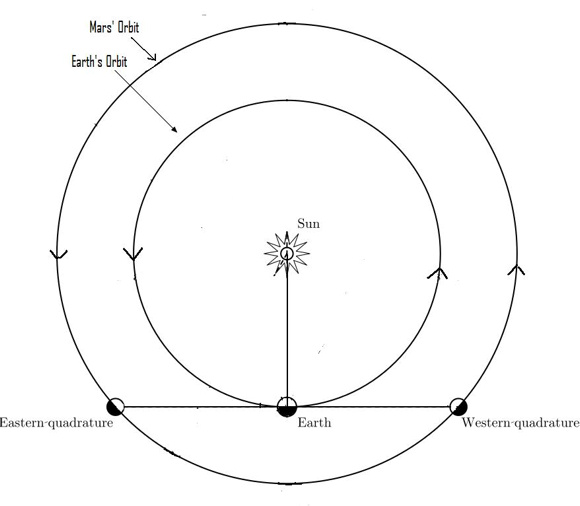
The red planet Mars swings to west quadrature on February 7, 2016. That means that – if you had a bird’s-eye view of the solar system – you’d see the sun, Earth and Mars making a right (90-degree) angle in space, with Earth at the vertex of this angle. It means the best time to see Mars in 2016 – in fact, the best time in about two years – is just ahead! Follow the links below to learn more:
Mars’ west quadrature on February 7
From Mars, Earth at greatest evening elongation
2016 is a wonderful year for Mars
Mercury at greatest morning elongation on February 7

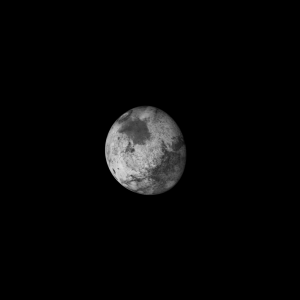
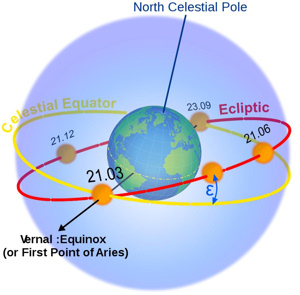
Mars’ west quadrature on February 7. The diagram above helps to illustrate Mars at quadrature. Note that Mars is a superior planet – a planet orbiting the sun outside of Earth’s orbit.
As seen from Earth’s sky, Mars lies some 90o west of the sun at west quadrature. That means Mars reaches its highest point for the day around 6 a.m. local time – the time on your clock no matter where you are on the globe – which is about six hours before the sun climbs highest up for the day at solar noon.
At the Earth’s equator (0o latitude), Mars rises in the east around midnight and sets in the west around noon.
It’s somewhere near those times as seen from all parts of the globe.
At west quadrature on February 7, 2016, Mars’ declination on the sky’s dome (analogous to latitude here on Earth) is nearly the same as the declination of the February 7 sun. On February 7, 2016, Mars and the sun reside more than 15o south of the celestial equator – a projection of the Earth’s equatorial plane onto the celestial sphere.
In other words, Mars’ southern declination at present is akin to that of the sun during a Northern Hemisphere winter or Southern Hemisphere summer.
Therefore, northerly latitudes in the Northern Hemisphere find Mars spending less time above the horizon than at the Earth’s equator. North of the equator, Mars rises in the east shortly after midnight and sets in the west somewhat before noon.
At southerly latitudes in the Southern Hemisphere, in contrast, Mars spends more time above the horizon than at the Earth’s equator. South of the equator, Mars rises in the east shortly before midnight and sets in the west somewhat after noon.
By midnight, we mean midway between sunset and sunrise, and by noon, midway between sunrise and sunset.
Each month, the moon reaches west quadrature around the time of last quarter moon. So there’s no mystery or magic about this location in our sky. It’s really very ordinary.
However, unlike the moon, which is always 50% illuminated by sunshine at quadrature, the telescope reveals that Mars at quadrature exhibits an oval-shaped gibbous phase. That is, it’s more than half lighted but less than full.
The percentage of the Martian disk illuminated by sunshine wanes (or shrinks) to its minimum at quadrature, exhibiting a 90% phase on February 7, 2016. Because of Mars’ elliptical (oblong) orbit, though, Mars’ phase is NOT always the same at each quadrature. For instance, when Mars sweeps to east quadrature on September 13, 2016, its disk will actually be 85% illuminated. At that time, Mars will be appreciably closer to perihelion – Mars’ closest point to the sun in its orbit.
Because Mars orbits the sun outside of Earth’s orbit, Mars always appears full or close to full in our sky.
Mars reaches full phase at conjunction (sun between Earth and Mars) and again at opposition (Earth between sun and Mars).
At other times, Mars displays varying degrees of a waxing or waning gibbous phase.
After February 7, 2016, Mars will wax (grow) over the coming months, from its minimal gibbous 90% phase at west quadrature to full phase at opposition (when Mars resides 180o from the sun in Earth’s sky) on May 22, 2016.
When Mars most recently swung behind the sun (at conjunction) on June 14, 2015, this world transitioned over to Earth’s morning sky. That marked the start of the red planet’s wane from full phase at conjunction to his minimal gibbous phase at west quadrature. Waning to a minimum of 90% full at west quadrature on February 7, 2016, Mars will then start to wax again. Some three and one-half months after west quadrature – on May 22, 2016 – Mars’ disk will become fully illuminated at opposition, to boldly showcase full phase all night long, from sundown to sunup.
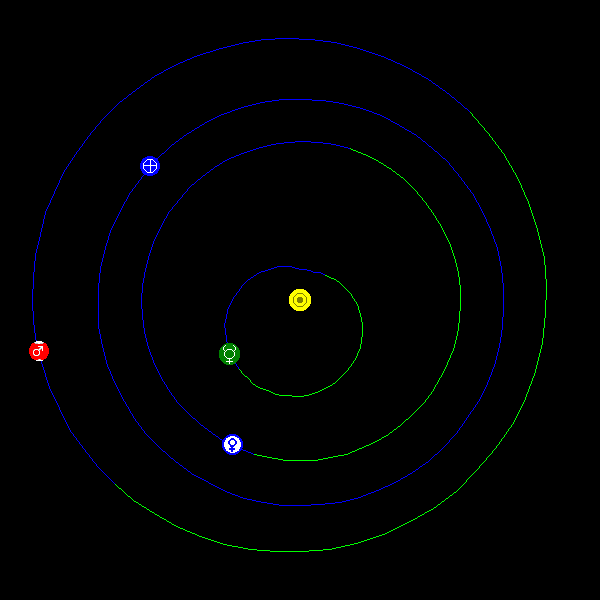
From Mars, Earth at greatest evening elongation
The diagram above shows the inner solar system for February 7, 2016, highlighting Mercury at its greatest western (morning) elongation and Mars at west quadrature.
Earth is an inferior planet as seen from Mars. So when Mars sweeps to west quadrature in our sky, Earth is essentially at its greatest eastern (evening) elongation in the Martian sky. That means that – if there were earthlings on Mars now – they’d have a good view of Earth in the Martian evening sky.
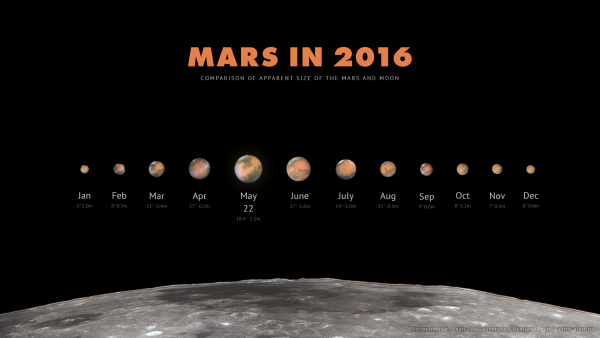

2016 is a wonderful year for Mars. The Red Planet alternates years in our sky with respect to its appearance from Earth. In some years – like 2016 – it comes to opposition in our sky as Earth passes between Mars and the sun. Then it appears bright and beautiful in our sky. In alternate years, we are far across the solar system from Mars, and the Red Planet appears faint and inconspicuous in our sky.
So 2016 is one of the good years. Watch for Mars in the months ahead!
Feb 7 Mars at west quadrature
Apr 17 Mars starts retrograde
May 22 Mars at opposition (middle of the best time of year to see Mars)
May 30 Mars closest to Earth
Jun 30 Mars ends retrograde
Aug 25 Mars-Saturn conjunction
Sep 13 Mars at east quadrature
Oct 29 Mars at perihelion
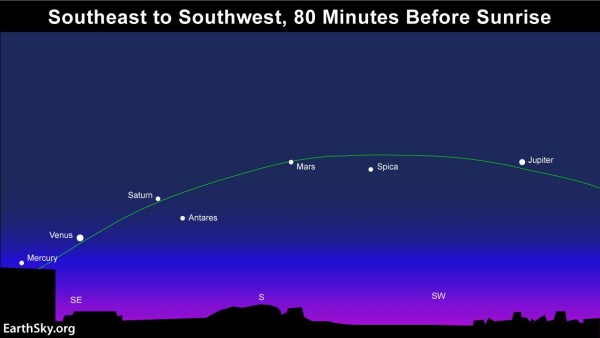
Mercury at greatest morning elongation on February 7. By the way, inferior planets that orbit the sun inside Earth’s orbit show the entire range of phases, but never reach quadrature or get as far as 90o from the sun in Earth’s sky.
Quite by coincidence, Mercury swings to its greatest western (morning) elongation (25.5o from the sun) on February 7, 2016, the same date that Mars sweeps to west quadrature. Scroll upward for an illustration of an inferior planet at greatest elongation, as well as a superior planet at quadrature.
Bottom line: Enjoy the great morning sky show in early February as Mars sweeps to quadrature, Mercury swings out to greatest elongation, and the five naked-eye planets light up the predawn/dawn sky.











